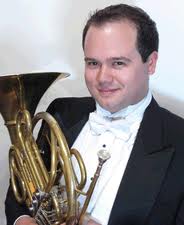|
Symphony
MYSTICAL PLANETS AND LIVELY GERSHWIN ORTIZ AT FINAL SRS CONCERT
by Peter Lert
Sunday, May 4, 2025
Symphony
VSO'S CONCERT MUSIC OF TIME, MUSIC OF PLACE
by Peter Lert
Sunday, April 27, 2025
Choral and Vocal
VOCAL ELEGANCE AND FIRE AT THE 222'S RECITAL APRIL 26
by Pamela Hicks Gailey
Saturday, April 26, 2025
CANTIAMO SONOMA SINGS AN INSPIRED GOOD FRIDAY MOZART REQUIEM CONCERT
by Pamela Hicks Gailey
Friday, April 18, 2025
DRAMATIC SHOSTAKOVICH SYMPHONY CLOSES PHILHARMONIC'S 25TH SEASON
by Terry McNeill
Sunday, April 13, 2025
LARGE COLLEGE OF MARIN AUDIENCE GREETS STOPHER ARTISTRY
by Terry McNeill
Saturday, April 5, 2025
Chamber
FRISSON DELIVERS SHIVERS OF DELIGHT
by Abby Wasserman
Sunday, March 30, 2025
OLD AND MOSTLY NEW IN SRS MARCH CONCERT IN WEILL
by Peter Lert
Saturday, March 22, 2025
Symphony
TWO FORMIDABLE SYMPHONIES AND PURPLE MOUNTAINS AT SRS CONCERT
by Peter Lert
Sunday, February 23, 2025
Chamber
THE PARKER CAPTURES DEMANDING ADES QUARTET AT RAC SEBASTOPOL CONCERT
by Peter Lert
Saturday, February 15, 2025
|
 |
 Hornist Darby Hinshaw |
HORN OF PLENTY
by Steve Osborn
Saturday, February 11, 2012
After a lifetime of concert going, I have to confess that I’ve never witnessed a French horn concerto in the flesh, although I’ve heard plenty of recordings by Barry Tuckwell and other French horn virtuosi. My normal experience of French horns is to observe them sitting in the back of the orchestra, occasionally tooting away. It was thus something of a revelation to see French hornist Darby Hinshaw, an erstwhile member of the Santa Rosa Symphony, stride before that ensemble last Saturday night and station himself in the soloist’s perch for the Mozart Horn Concerto in E Flat, K. 417.
Mr. Hinshaw is a solidly built musician, and he wasted no time in demonstrating that he knows how to play his instrument. With his right hand firmly ensconced in the bell and his left manipulating the valves, he emitted a pure and ringing tone. He seemed to be playing with his right hand as much as his left, although the machinations of the former were hidden from view. On occasion he extracted his hand from the bell and twirled the horn to expel the accumulated spit, like a gunslinger showing off his revolvers.
As with all his other concertos for diverse instruments, Mozart’s writing for the French horn is particularly sympathetic, zeroing in on the instrument’s intrinsic capabilities and essential sound, which is by turns elegiac, heraldic and wistful. Mr. Hinshaw brought all these qualities to bear in the Andante second movement, where he played the main theme with great expressivity and pitch-perfect accuracy. The closing bars were especially evocative, suggesting the sound of a horn echoing across an Alpine valley.
The opening and closing movements were sprightly and filled with endearing melodies, although the lack of a cadenza in the first didn’t give Mr. Hinshaw much chance to display his gifts. The last movement, set in rapid 6/8 time, suggests nothing so much as a hunt, and here again the artist played flawlessly, although at times he seemed constrained. The applause at the end was vigorous and well deserved.
Hinshaw wasn’t actually the first soloist of the evening. That spot went to a computer-driven “synthesis engine” in the back of the auditorium that interacted with the orchestra in the opening piece, “Hold That Thought,” by Berkeley composer Edmund Campion, who was in attendance. The machine’s sonic contributions arrived via speakers above the orchestra, which consisted only of strings.
“Hold That Thought” is the kind of music you might hear in a planetarium while pretending you’re on a spaceship headed into a distant galaxy, preferably through a time warp. Clouds of sound envelop you, beginning with a high sustained pianissimo in the strings. All at once, the air conditioner kicks on--or is that the synthesizer? It was hard to tell at first, but then it became clear that the device was emitting sounds that echoed the strings, at least in the machine’s own digital conception of the world.
The misty atmosphere continued, with the orchestra essentially playing sustained chords, either loud or soft, and the synthesizer offering its two cents worth whenever occasion permitted. While the quality of the sound was sometimes of interest, the structure of the piece was not. There seemed to be no forward movement, no development--just clouds of sound. As suggested by the title, it was best to put thought on hold and just accept the experience for what it was.
In contrast to the opening piece, cascades of thoughts were on display in the second half of the program, devoted entirely to Tchaikovsky’s E Minor Fifth Symphony, Op. 64. This is a work filled with contrasts and clashes of musical ideas. From the somber tones of the clarinets at the beginning to the no-holds-barred climaxes at the end, the symphony seems to trace the course of a mind in ferment, often uncertain of how to proceed.
Tchaikovsky’s Fifth offers a compelling script, but it requires a convincing performance. While the Santa Rosans, under conductor Bruno Ferrandis, certainly played all the notes, they fluctuated between full engagement with the work and mere recitation. Certain passages were exquisite, such as the famous horn solo in the second movement (played here by Mr. Hinshaw) and the lilting waltz of the third, but others were routine. Dynamic contrasts were few, and tempos were often sluggish.
Fortunately, both conductor and musicians rallied in the final movement, investing energy and insight into Tchaikovsky’s score. The notes seemed to lift off the page, finally igniting the work with a previously flickering spark of life.
|
